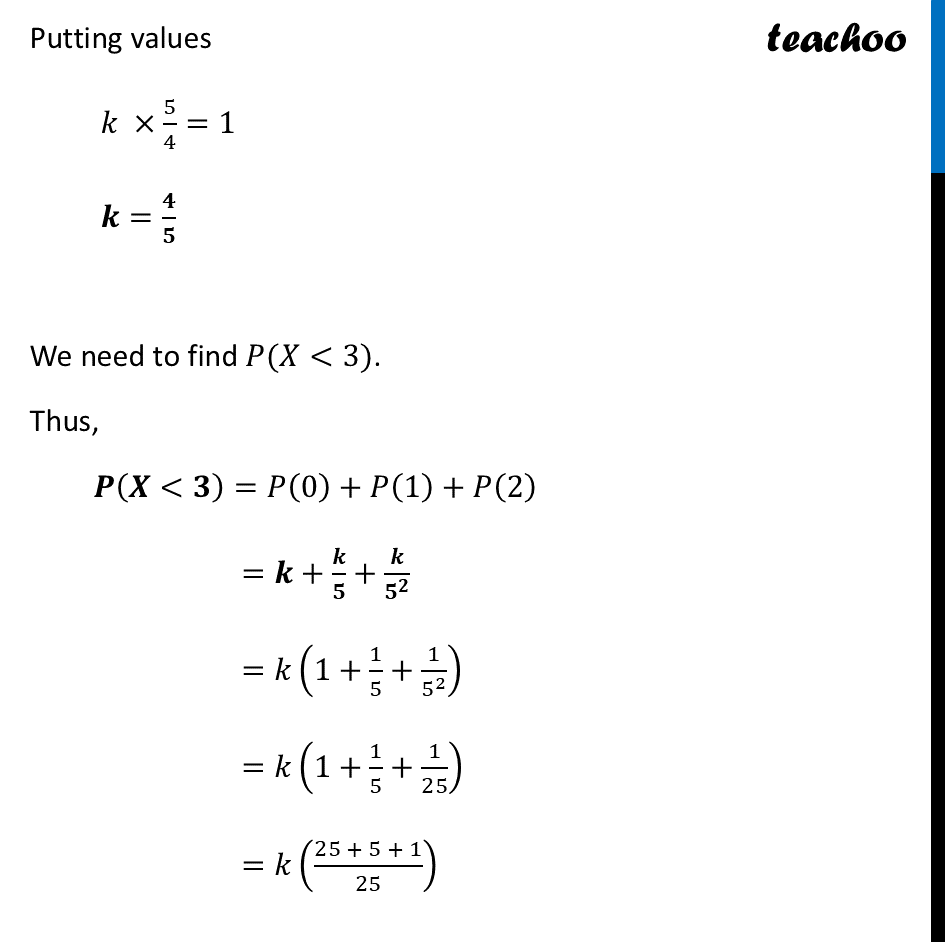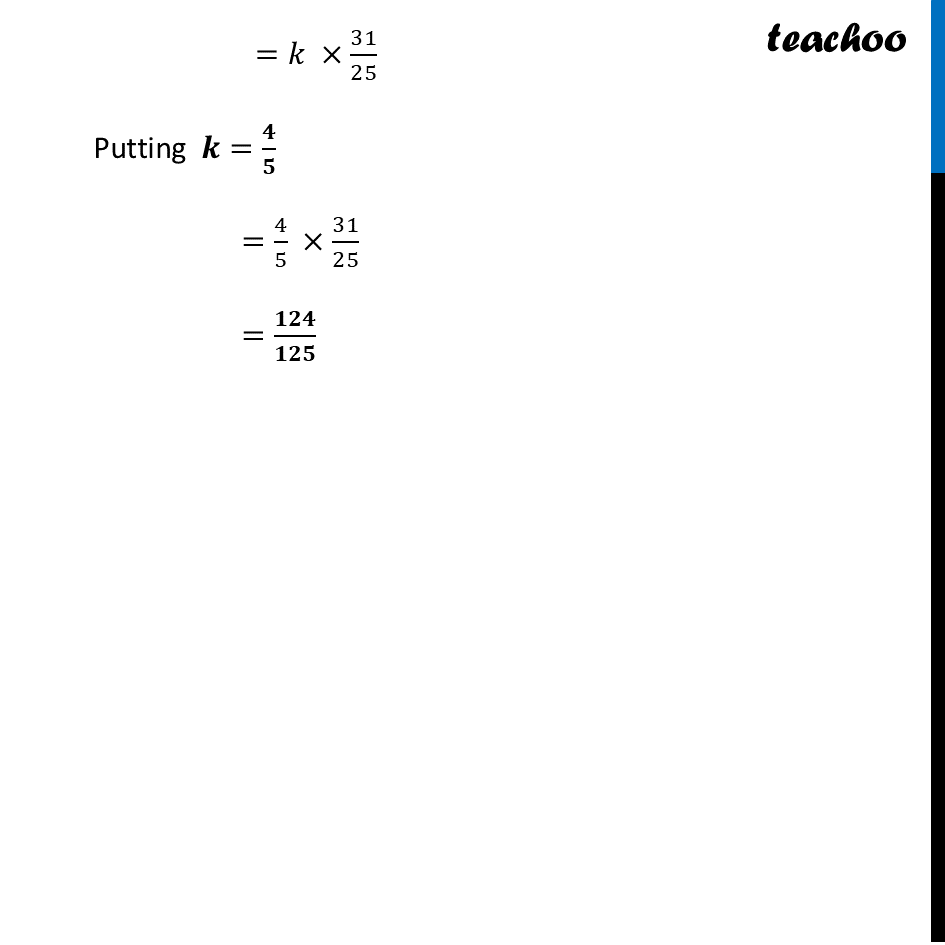





CBSE Class 12 Sample Paper for 2025 Boards
CBSE Class 12 Sample Paper for 2025 Boards
Last updated at Feb. 13, 2025 by Teachoo






Transcript
Question 31 (B) A random variable 𝑋 can take all non - negative integral values and the probability that 𝑋 takes the value 𝑟 is proportional to 5^(−𝑟). Find 𝑃(𝑋<3).It’s given that P(X = r) is proportional to 5^(−𝑟) i.e. P(X = r) ∝ 5^(−𝑟) So, we can write P(X = r) = k 5^(−𝑟) = 𝒌/𝟓^𝒓 Where k is some constant Thus, 𝑷(𝒓=𝟎)=𝑘/5^0 = 𝑘/1 = 𝒌 𝑷(𝒓=𝟏)=𝑘/5^1 = 𝒌/𝟓 𝑷(𝒓=𝟐)=𝑘/5^2 𝑷(𝒓=𝟑)=𝑘/5^3 First term = a = 1 Common ratio = r = (1/5)/1=𝟏/𝟓 Now, Sum of infinite GP = 𝑎/(1 − 𝑟) = 1/(1 − 1/5) = 1/(4/5) = 𝟓/𝟒 Now, 𝒌(𝟏+𝟏/𝟓+𝟏/𝟓^𝟐 +𝟏/𝟓^𝟑 +…)=𝟏 Putting values 𝑘 ×5/4=1 𝒌=𝟒/𝟓 We need to find 𝑃(𝑋<3). Thus, 𝑷(𝑿<𝟑)=𝑃(0)+𝑃(1)+𝑃(2) =𝒌+𝒌/𝟓+𝒌/𝟓^𝟐 =𝑘(1+1/5+1/5^2 ) =𝑘(1+1/5+1/25) =𝑘((25 + 5 + 1)/25) =𝑘 ×31/25 Putting 𝒌=𝟒/𝟓 =4/5 ×31/25 =𝟏𝟐𝟒/𝟏𝟐𝟓